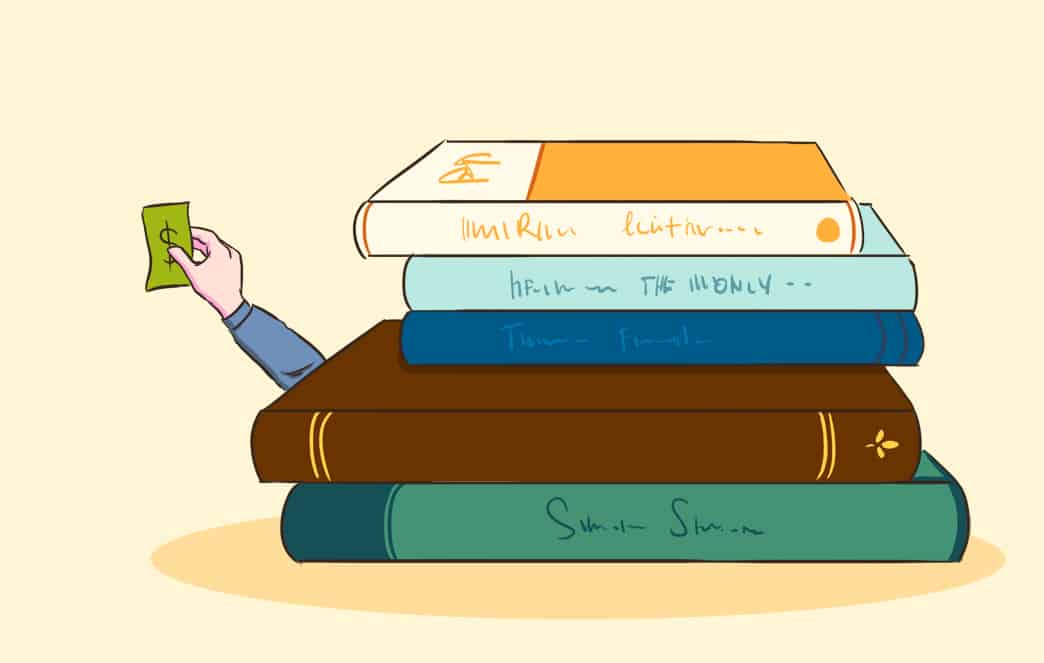Last week, The Varsity published a news article detailing the extent to which rising textbook costs are affecting students at U of T. The soaring cost of materials at the U of T Bookstore is, in part, emblematic of a larger structural problem currently facing Canadian universities and their students, which raises several important questions about financial accessibility to higher education.
The average debt for a Canadian student with some form of debt amounts to $25,000 upon graduation — a number that reflects the overwhelming cost of post-secondary education in this country. With little savings to be gained from the U of T Bookstore’s rental program and low buy-back rates, students are left with few options for reasonably priced materials through the university, leading many to turn to buying and selling used materials online. While the issues of public funding models and enrolment complicate any grievance over the cost of higher education in Canada, the time has come to address exorbitant and exclusionary financial barriers to the university experience. Granted, if U of T is going to continue to thrive as an educational institution, it will be forced to supplement provincial funding through more capitalistic practices, such as the sales of textbooks and materials. However, it is of the utmost importance that students not bear the brunt of the university’s financial growth to the point that necessary educational costs prove insurmountable.
The reasons for the astronomically high costs of textbooks are understandable. The industry revolves around an exhaustive scholarly review process of new materials that entails compensating co-authors, research staff, editors, etc. This, combined with the high print quality of glossy colour texts and the seemingly endless turnover of new editions, is among the reasons textbooks are prohibitively expensive products — not to mention the fact that textbooks are perennially essential resources with an inelastic demand.
There are several alternatives to brand new print texts available to students, although each comes with its own set of limitations. Online texts are sometimes available and are generally less expensive than their print counterparts. However, unlike their hardcopy counterparts, online versions of textbooks are often only accessible for a set period of time — generally a semester or academic year — meaning that students lose the opportunity to refer back to or resell their textbooks. Online texts also remain quite expensive, largely due to the review process they are still subject to and the labour required to develop an online platform and accompanying digital resources.
Open access material is also worthy of consideration and is a subject that has come under recent debate. In 2012, the Supreme Court of Canada overhauled the Copyright Act, effectively loosening the restrictions of copyright law. The legislative changes included an expansion of the fair dealing principle within the context of education. The university interpreted this ruling to mean that so long as instructors use 10 per cent or less of a given academic work, it constitutes fair dealing, and therefore does not require copyright licensing. Open access material is included in the definition of these 10 per cent or less instances, as well as scholarly articles available through the U of T library system, and online sources such as Google Scholar. While these open access materials are useful to students for things like essay writing, they are decidedly less useful in terms of course syllabi. Professors do not always consider price in addition to quality when selecting their texts and, as such, some often choose rigorously reviewed, but painfully expensive textbooks over more financially accessible alternatives.
Additionally, the rental costs of books through the U of T bookstore can be only marginally cheaper than buying a book at its full price. Buy-back rates are subject to fluctuation, with students sometimes being offered significantly less than the total value of the material when they come to sell them back to the bookstore.
With the increasing cost of education in Ontario, one step U of T’s administration ought to consider with a view to limiting the financial blow to students is the implementation of reasonable buy-back rates and a worthwhile textbook rental system. Such a move would be in the university’s best interest as more students would be willing to participate in the program, and more used materials would be available for sale. Course instructors also have a role to play — while some do their best to keep course material costs low, many insist on assigning new editions of textbooks or course packs in lieu of shorter readings that would fall under the 10 per cent line and could be posted on Blackboard at no additional cost to students.
With these barriers in mind, the university has a responsibility to create an infrastructure in which materials are as financially accessible as possible. Currently, the systems in place are woefully inadequate, especially for an institution that prides itself on a reputation for progress.
Editor’s note: A previously posted version of this editorial was outdated.
The Varsity‘s editorial board is elected by the masthead at the beginning of each semester. For more information about The Varsity’s editorial policy, email [email protected].


